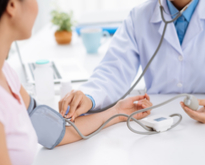In 2016, the majority of households (71%) in the European Union were able to pay the costs for health services with ease. The share of households who reported that they could pay for these services ‘fairly easily’ was 22%, ‘easily’ 18%, or ‘very easily’ 31%. The remaining 29% of households reported that they had ‘some’ (16%), ‘moderate’ (8%) or ‘great’ (4%) difficulty paying for health service costs.
The cost of both public and private health care services are taken into consideration. Health care services costs include, for example, costs of consultations, treatments and prescribed medications, as well as dental examinations or treatments. If the household paid with ‘great difficulty’ but was nevertheless reimbursed several months after the payment, the household would still report the burden.
The source dataset is available here.
More than 80% of households in seven Member States reported that they were able to pay for health services costs with ease: Finland (87%), the United Kingdom (86%), Germany (85%), Sweden (84%), Denmark (82%), Lithuania (81%) and Luxembourg (80%). In contrast, over 50% of households in six Member States experienced difficulty in covering these costs: Greece (90%), Hungary (74%), Cyprus (72%), Latvia (64%), Slovakia (61%) and Italy (56%).
In the majority of Member States, difficulty in covering health services costs was greater among households with a lower income (40%) than those with a higher income (27%). In this respect, the largest differences were recorded in Belgium (58% for lower-income households compared with 19% for higher-income households), Luxembourg (46% compared with 14%) and the Netherlands (48% compared with 22%).
For the purposes of this article, the category ˈwith easeˈ includes the subcategories "fairly easily", "easily", or "very easily", whilst the category ˈwith difficulty' includes the subcategories "with some difficulty", "with difficulty", or "with great difficulty". "Lower income" means "below 60% of median equivalised income" and "higher income" means "above 60% of median equivalised income".
This article marks the World Health Day, which is celebrated on 7 April.
For more information
Eurostat website section on income, social inclusion and living conditions
Eurostat database on income and living conditions
Eurostat news release on access to services
To contact us: estat-user-support@ec.europa.eu

